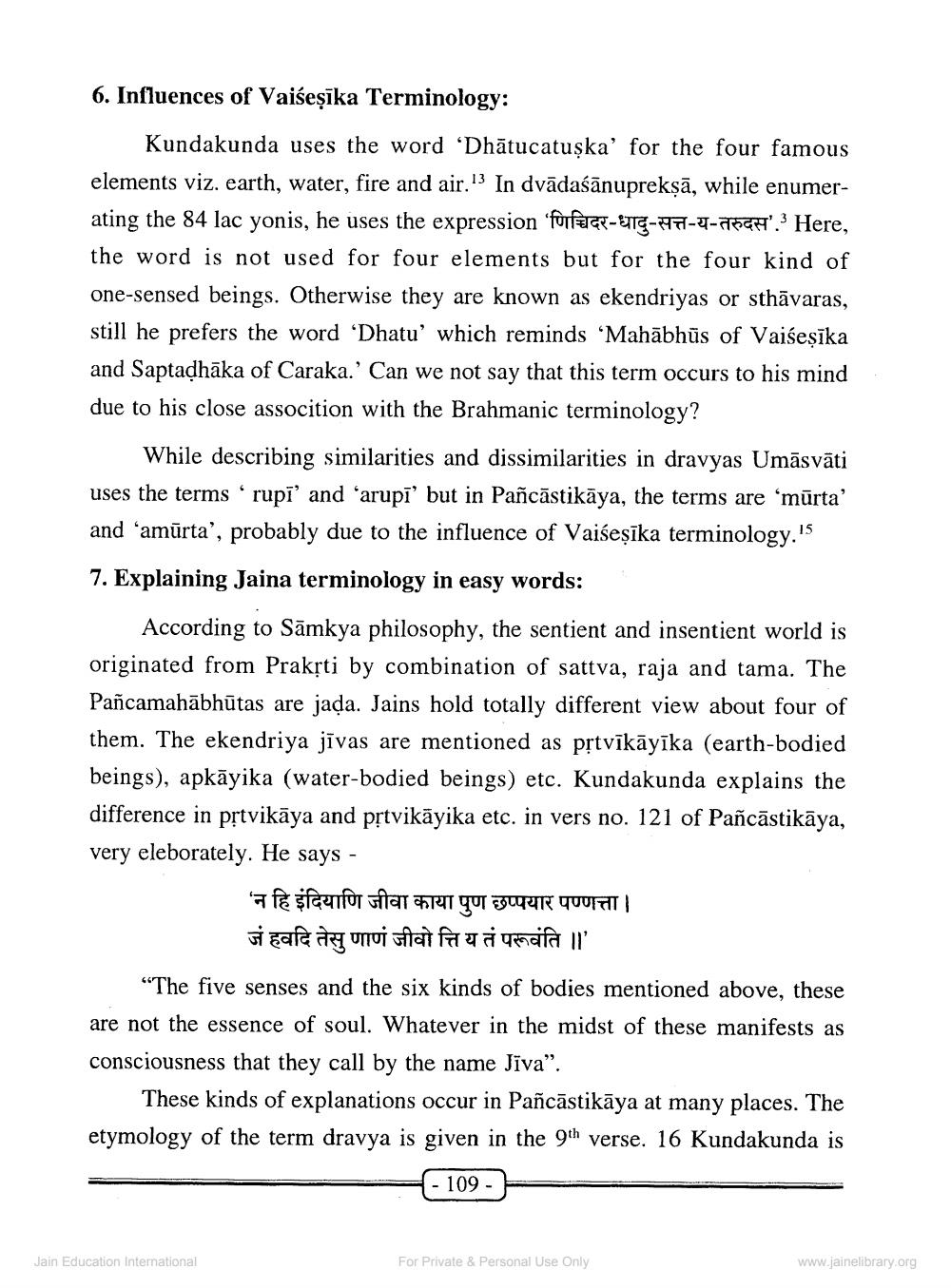________________
6. Influences of Vaiseşīka Terminology:
Kundakunda uses the word 'Dhatucatuṣka' for the four famous elements viz. earth, water, fire and air. 13 In dvādaśānuprekṣā, while enumerating the 84 lac yonis, he uses the expression forfa-UNG-HA--AGCH'.' Here, the word is not used for four elements but for the four kind of one-sensed beings. Otherwise they are known as ekendriyas or sthāvaras, still he prefers the word 'Dhatu' which reminds 'Mahābhüs of Vaiseṣīka and Saptaḍhaka of Caraka.' Can we not say that this term occurs to his mind due to his close assocition with the Brahmanic terminology?
While describing similarities and dissimilarities in dravyas Umāsväti uses the terms' rupi' and 'arupī' but in Pañcastikāya, the terms are 'murta' and 'amurta', probably due to the influence of Vaiseṣīka terminology, 15 7. Explaining Jaina terminology in easy words:
According to Samkya philosophy, the sentient and insentient world is originated from Prakṛti by combination of sattva, raja and tama. The Pañcamahābhūtas are jaḍa. Jains hold totally different view about four of them. The ekendriya jīvas are mentioned as pṛtvīkāyīka (earth-bodied beings), apkāyika (water-bodied beings) etc. Kundakunda explains the difference in pṛtvikāya and pṛtvikāyika etc. in vers no. 121 of Pañcāstikāya, very eleborately. He says -
'न हि इंदियाणि जीवा काया पुण छप्पयार पण्णत्ता । दाणं जीवो त्ति य तं परूवंति ॥'
"The five senses and the six kinds of bodies mentioned above, these are not the essence of soul. Whatever in the midst of these manifests as consciousness that they call by the name Jiva".
These kinds of explanations occur in Pañcāstikaya at many places. The etymology of the term dravya is given in the 9th verse. 16 Kundakunda is
- 109
Jain Education International
For Private & Personal Use Only
www.jainelibrary.org




